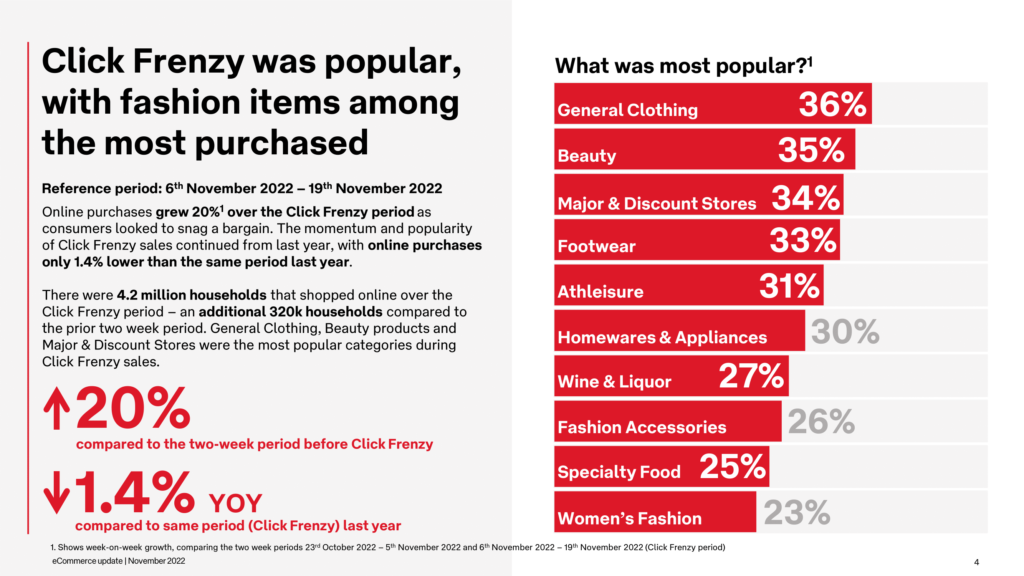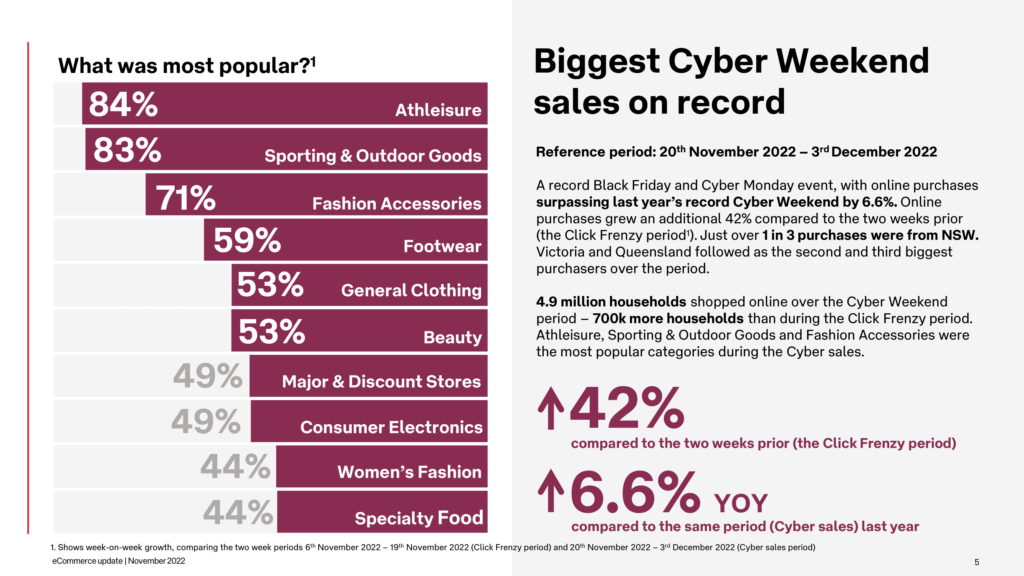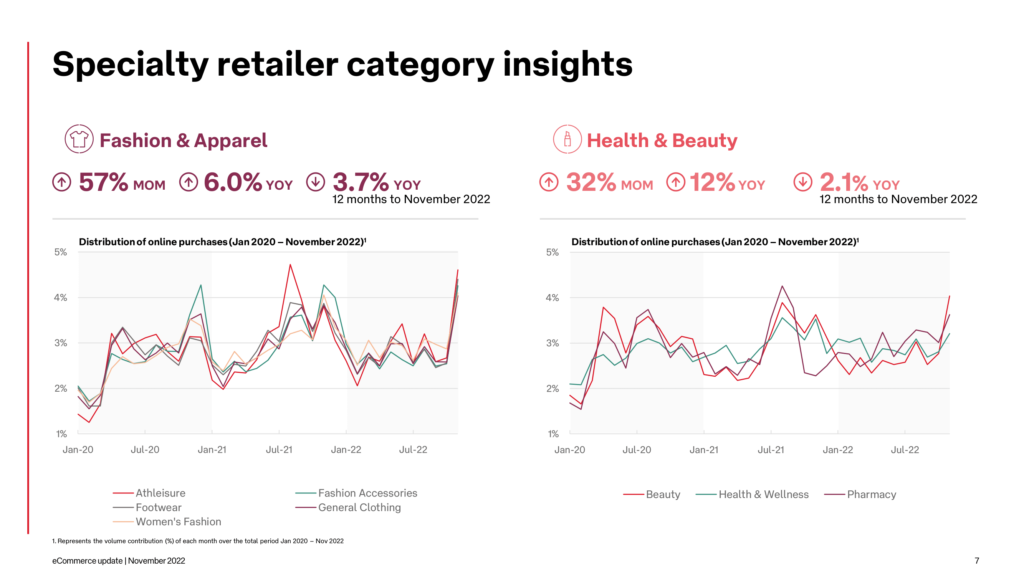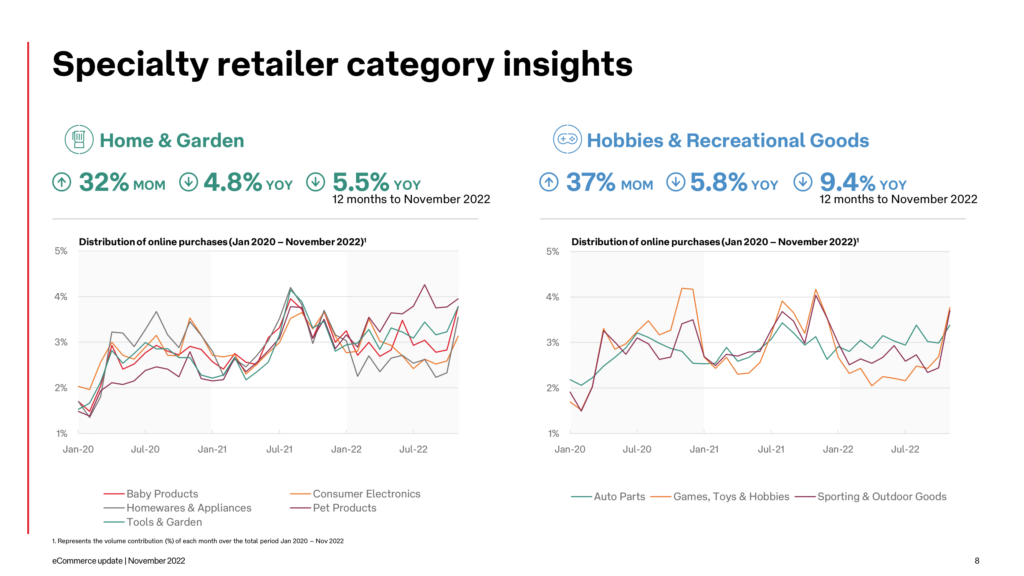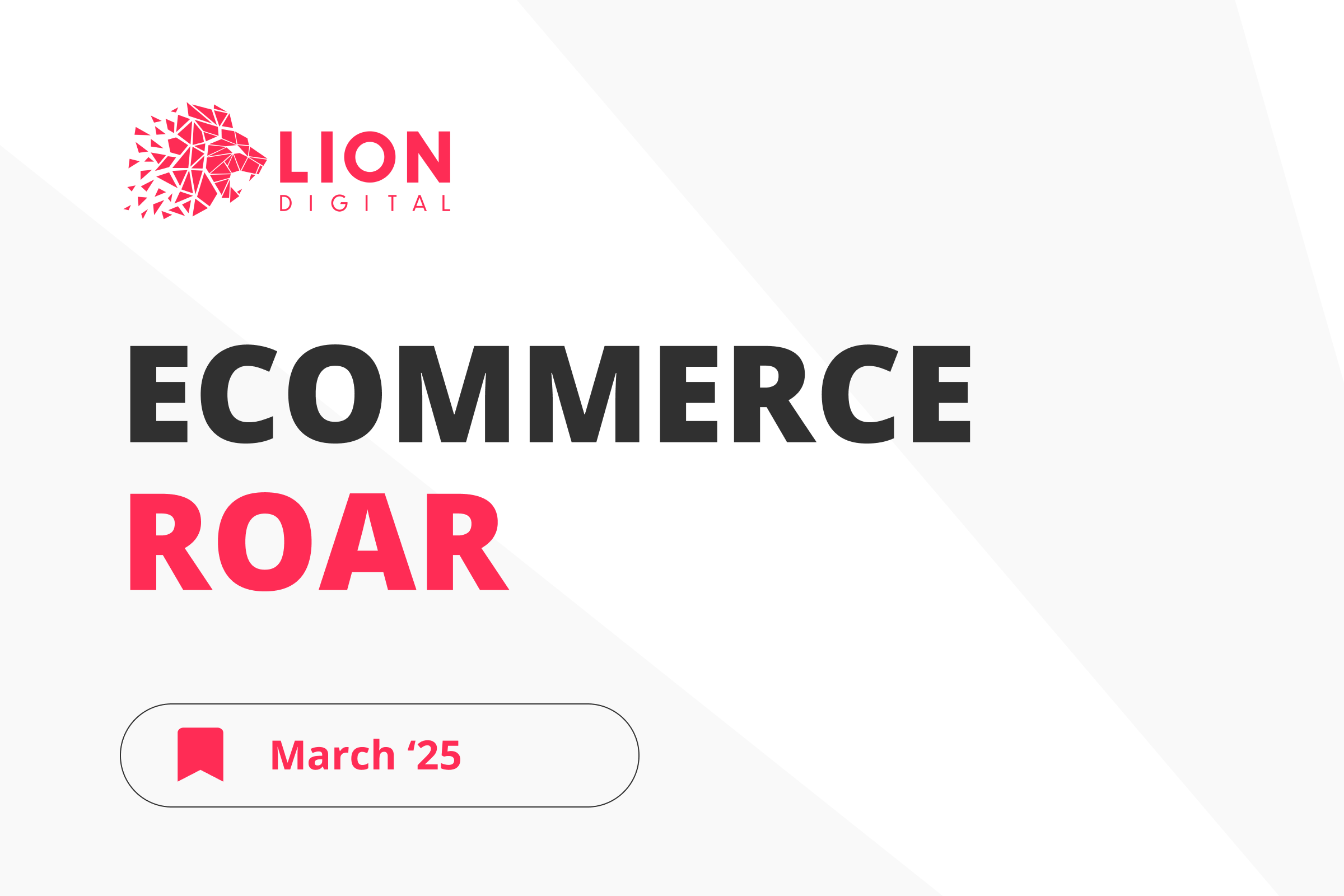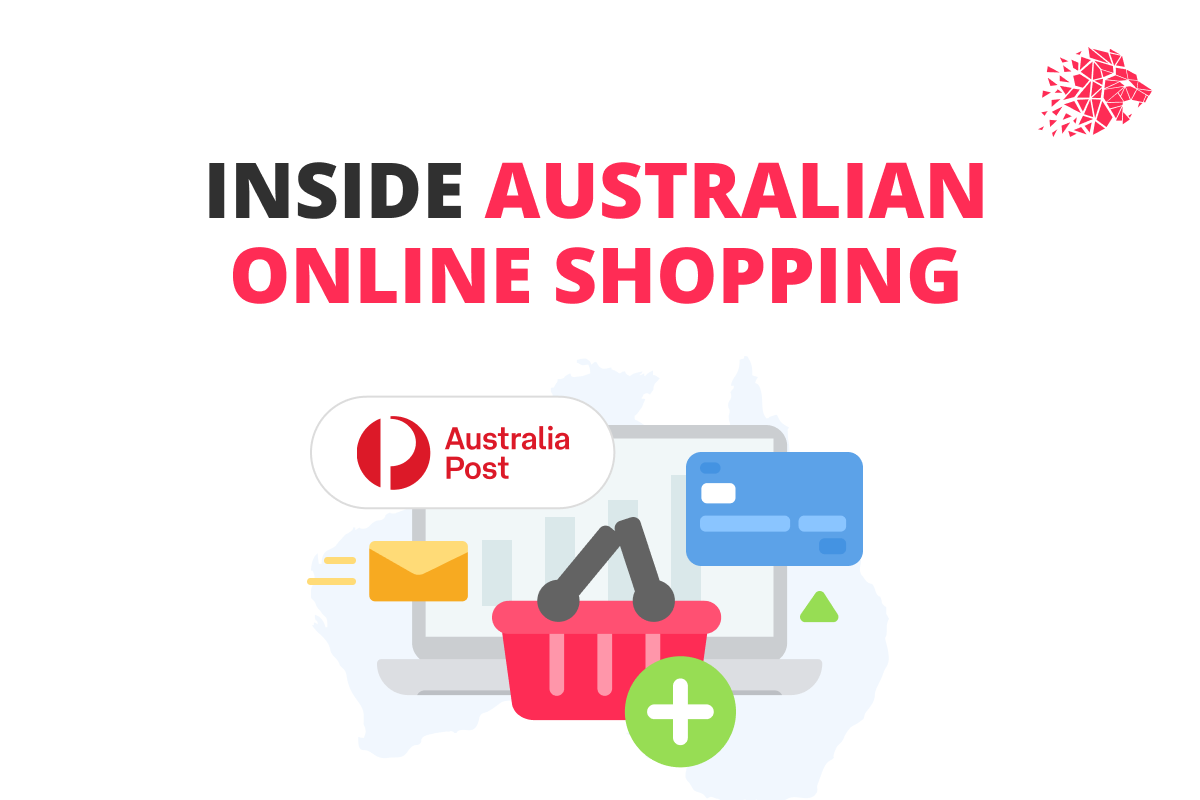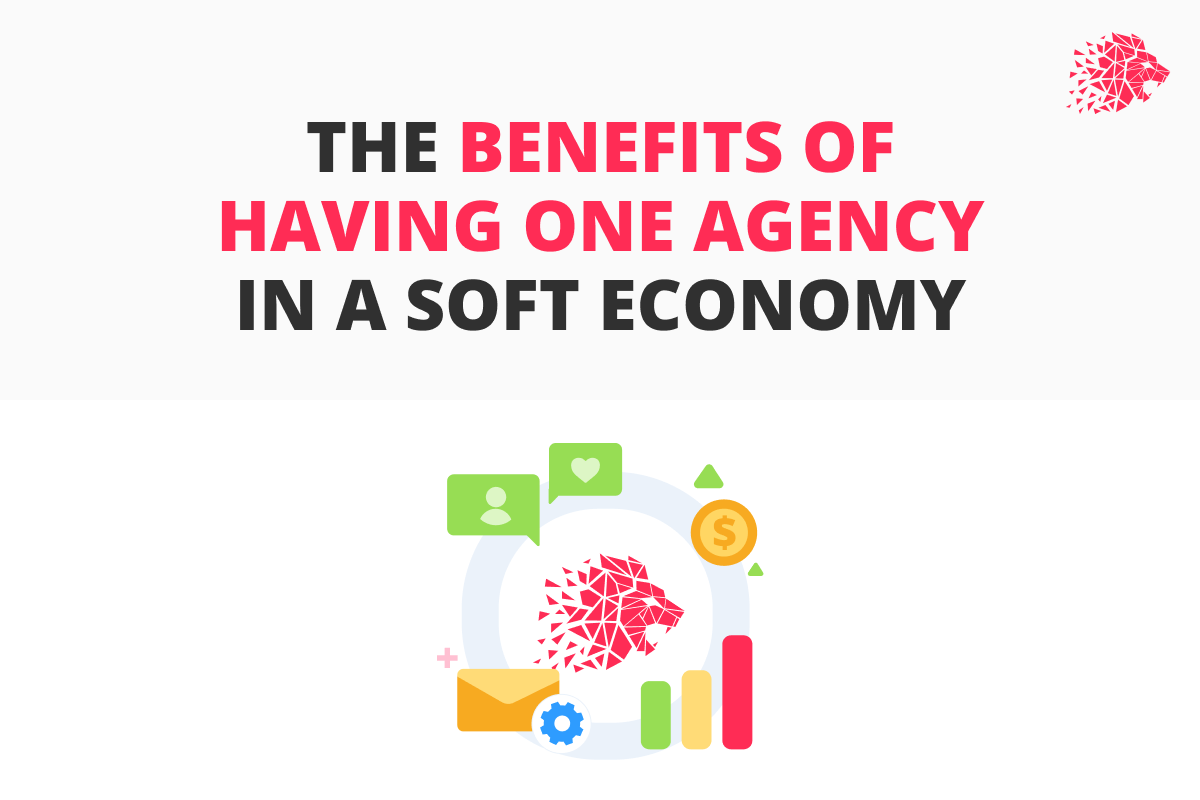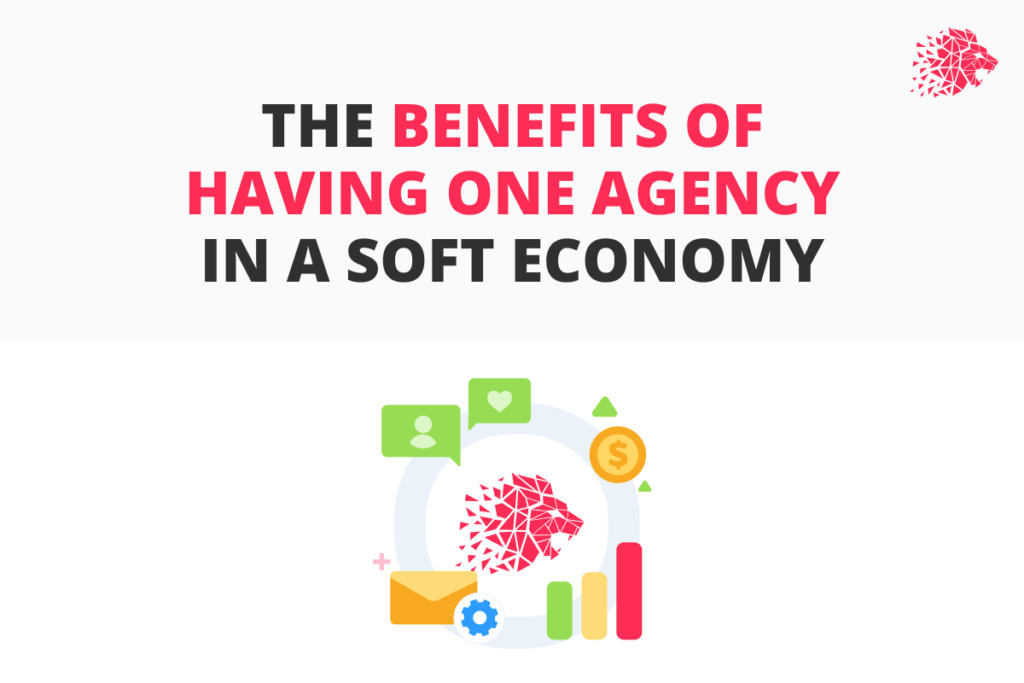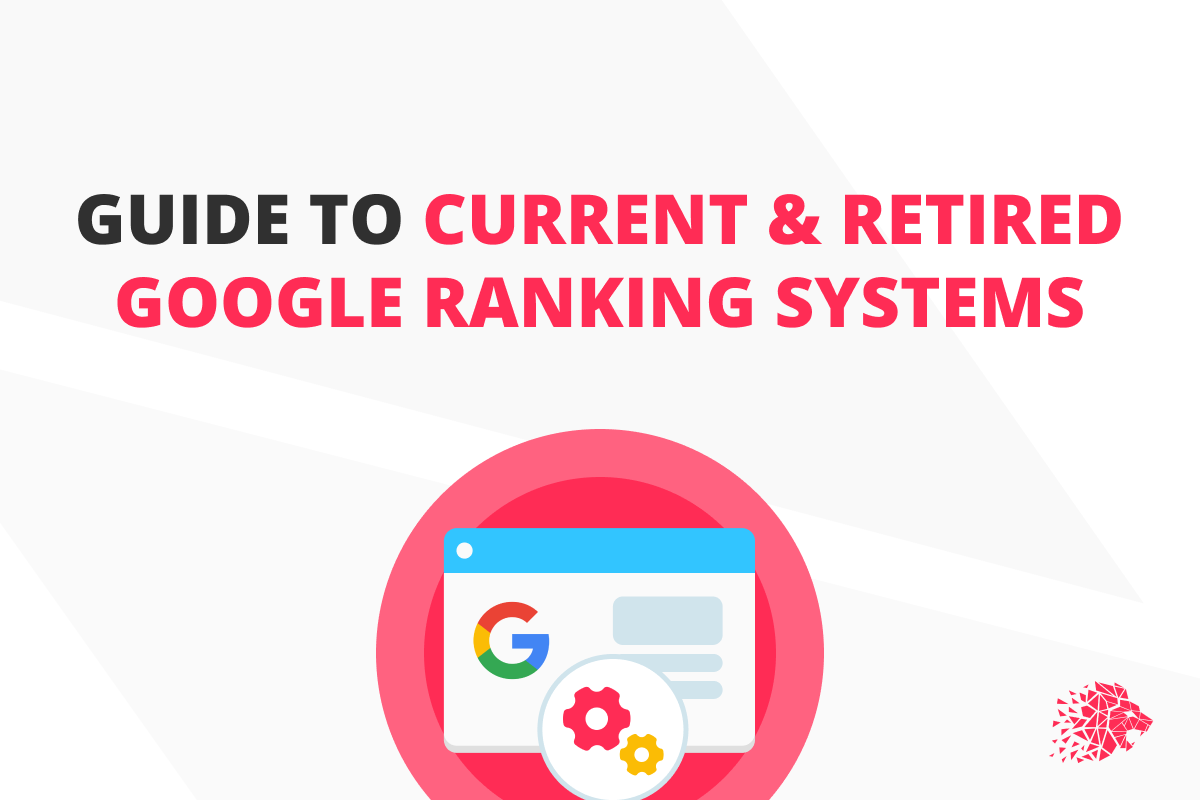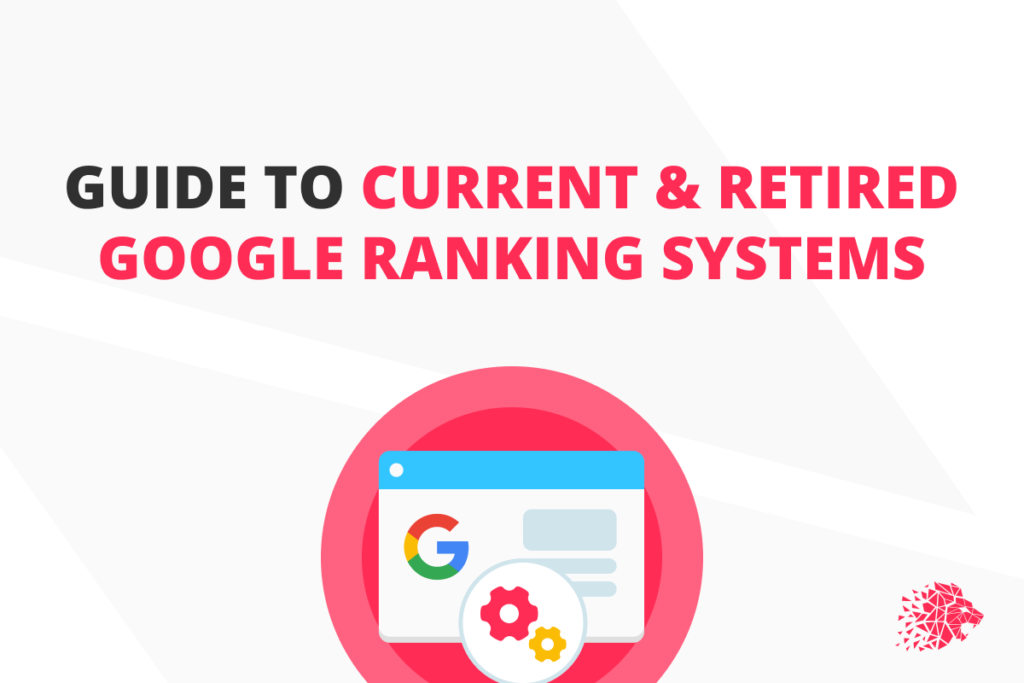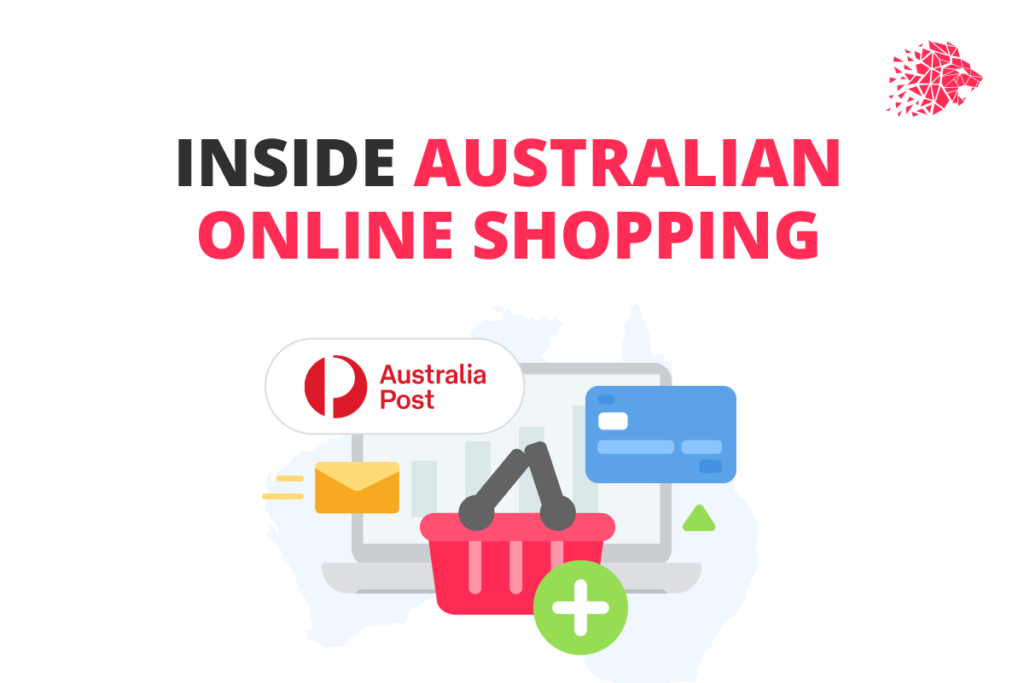
Black Friday and Cyber sales drove Australian online shopping in November 2022, making it hit a historical record with a +3% increase year-on-year (YOY) compared to November 2021 and a 38% month-on-month growth compared to October 2022.
Although the forecast of global economic recession directly affects the consumer’s behaviour on the Australian market and the tendency to save money over the festive season is observable, half of a million (570k) households on top of October’s results shopped online in November, achieving a record of more than 6 million households overall. eCommerce purchases in Queensland grew with the biggest lead of 11.2% YoY, whereas online shopping decreased by an anti-record 6.4% YoY in the Australian Capital Territory. Purchases being down by 3.8% in the last 12 months compared to the previous year is quite expected, considering that in 2021 lockdown-driven spending took place.
Preceding the Cyber Weekend period, Click Frenzy’s sales run between the 6th and 19th of November gave a splash of 20% online purchases increase in comparison with the previous two weeks and 4.2 million households that shopped online over this period. General clothing and Beauty were the top categories, with 36% and 35%, respectively.
Despite increased foot traffic back into retail stores, Black Friday and Cyber Monday online sales events were almost 7% higher than last year’s record Cyber Weekend period. To capture a larger share of wallets, in 2022, retailers started sales earlier, which explains an immediate increase that took place a few days before the official takeoff on November 25th. Overall, during Black Friday and Cyber Monday 2022 events, between the 20th of November and the 3rd of December: online purchases surpassed last year’s by 6.6% and increased by an additional 42% compared to the Click Frenzy period; 4.9 million households shopped online which is 700k more households than during the Click Frenzy period. The most popular categories during the Cyber sales were Athleisure, Sporting & Outdoor Goods and Fashion Accessories.
Here we share with you data from Australia Post. The results summarise the data and give insights into Australian Online Shopping trends for November 2022.



